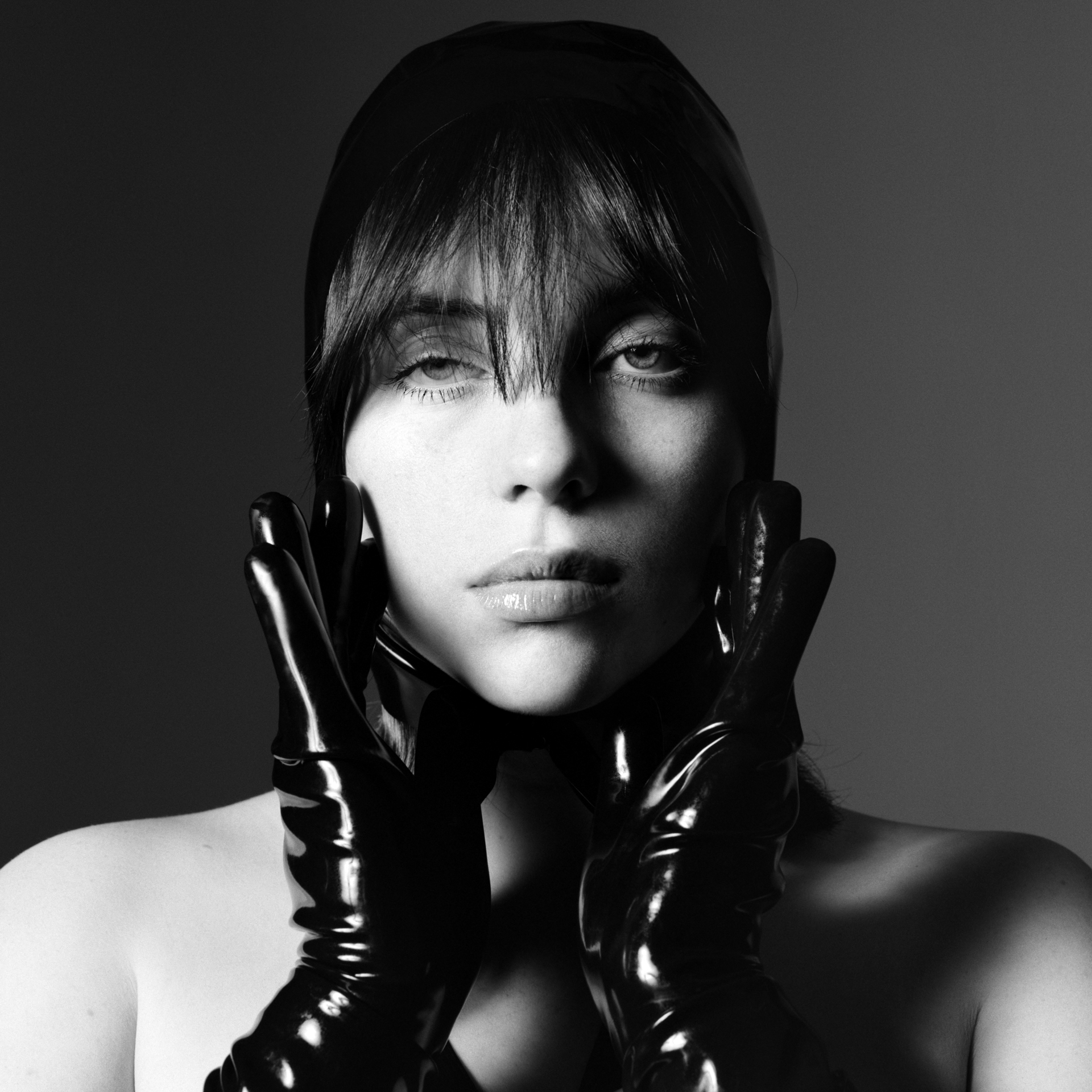This cover story appears in V135: now available for purchase!
I wouldn’t leave L.A. if the whole place tipped over into the ocean,” late author Eve Babitz wrote for her character Mary in 1977’s Slow Days, Fast Company: The World, The flesh and L.A. “She was too tough and too fragile for anyplace else.”
In her music video for “everything i wanted,” Billie Eilish and her brother Finneas drive a car along the streets of Los Angeles before submerging themselves in the Pacific. “I had a dream,” she sings, “I got everything I wanted / Not what you’d think / And if I’m being honest, it might’ve been a nightmare.”
That city, famously, is one where dreams and nightmares abound. It’s where Marilyn Monroe was born and became a star, but also where fellow Hollywood darling Sharon Tate was murdered. It’s home to Malibu’s pristine beaches, which inspired sex-fueled shows like Baywatch, just as it’s home to over 62,000 wildfires each year. Billionaires, those Americans who’ve “made it,” live a short Tesla-drive away from roughly 8,000 homeless people lining Skid Row. In L.A., utopia and dystopia coincide. It is the tension between these two extremes that has formed much of Eilish’s artistry—tough, but fragile, the stuff of dreams and nightmares.
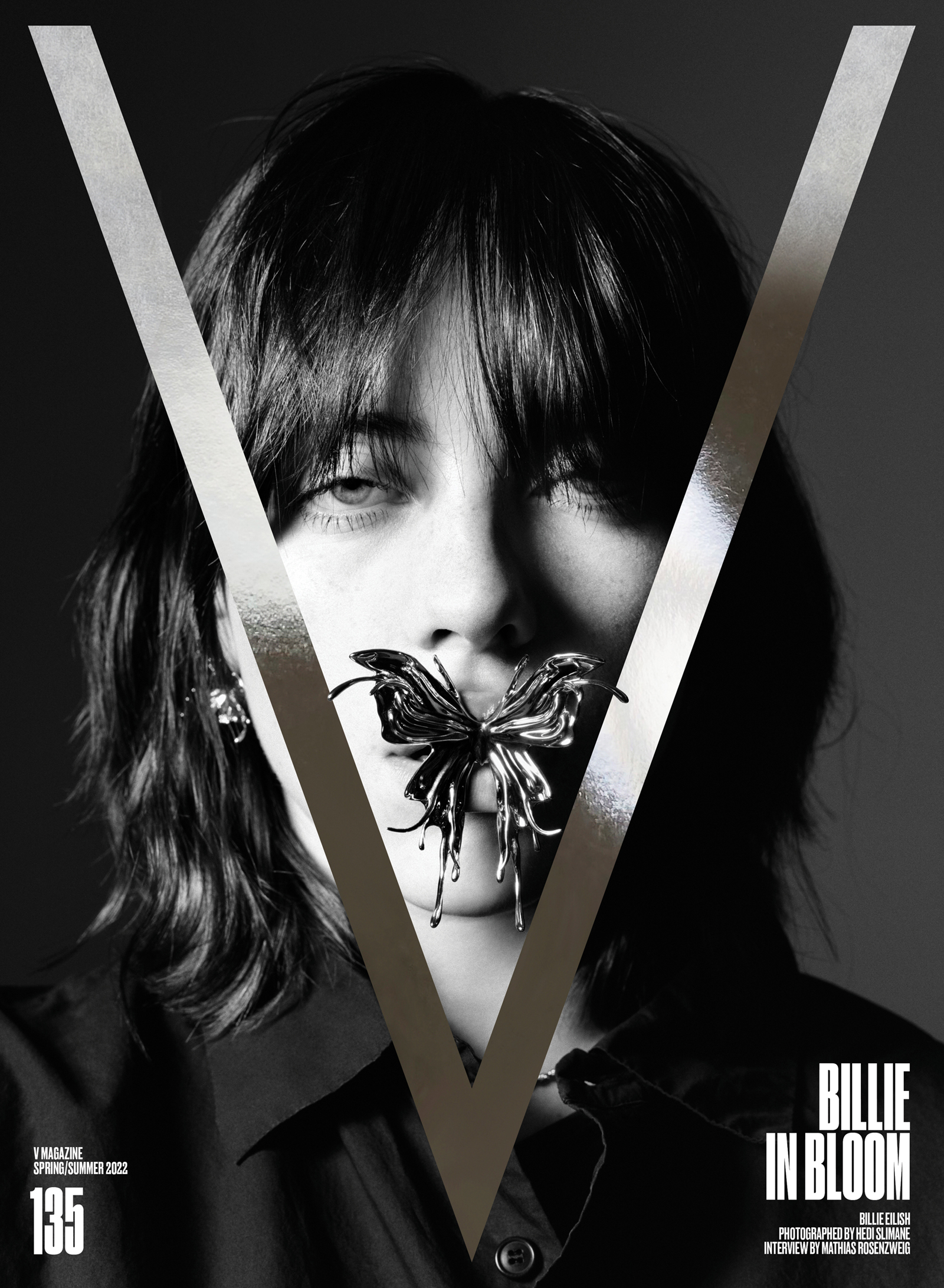
“I live a very high-highs and low-lows type of life,” Eilish says over the phone from L.A. It’s midnight in California, and she’s just wrapped rehearsals for the current world tour of Happier Than Ever, her sophomore album. “I’m just that kind of person. Everything feels huge or tiny.”
For Eilish, the 20-year-old artist who no longer needs an introduction, the highs have included (but are not limited to): seven Grammy wins, three MTV Video Music Awards, billions of streams, a famed and teary run-in with her childhood idol Justin Bieber at Coachella, 100 million Instagram followers, a documentary (Billie Eilish: The World’s a Little Blurry), and the opportunity to write and perform the new James Bond theme song for No Time to Die.
“It’s such an enormous honor to be a part of the small group of people that have been involved in the musical aspect of the Bond franchise,” she says. “It’s a huge dream that my brother and I have been dreaming about for as long as I can remember.”
Hailing from Highland Park, Eilish attributes much of her success to the city where she grew up. In August of last year, she released a streamable performance of her latest album for Disney+, titling the show Happier Than Ever: A Love Letter to Los Angeles. While speaking with radio host Zane Lowe about the city, she said, “It formed me. It made me who I am and gave me the opportunities that I got. I don’t think I’d have any of the same anything if it wasn’t for my hometown.”
A 15-minute drive from her childhood home, Eilish arrived at Milk Studios on January 6th, sporting sweats and a brunette shoulder-length haircut. Hedi Slimane, Celine’s visionary creative director (the most recent in a long list of titles), was set to shoot the songstress, making her the latest in a long slew of legendary musicians he’s shot in L.A., the likes of which include Iggy Pop, Joan Jett, and Keith Richards, for example. Accompanied by a handful of team members with face masks and plastic visors, including her mother Maggie Baird, Eilish quietly made her way to her dressing room—a makeshift fort made of moveable walls. Outside, the Hollywood sign is glaringly visible in the distance thanks to innocent blue skies. One just has to pass Eilish’s bodyguard, positioned by the door in case of an intruder, to see it. It wasn’t long before she was in the studio with Hedi, the rest of us peeking our heads in from the doorway to watch.
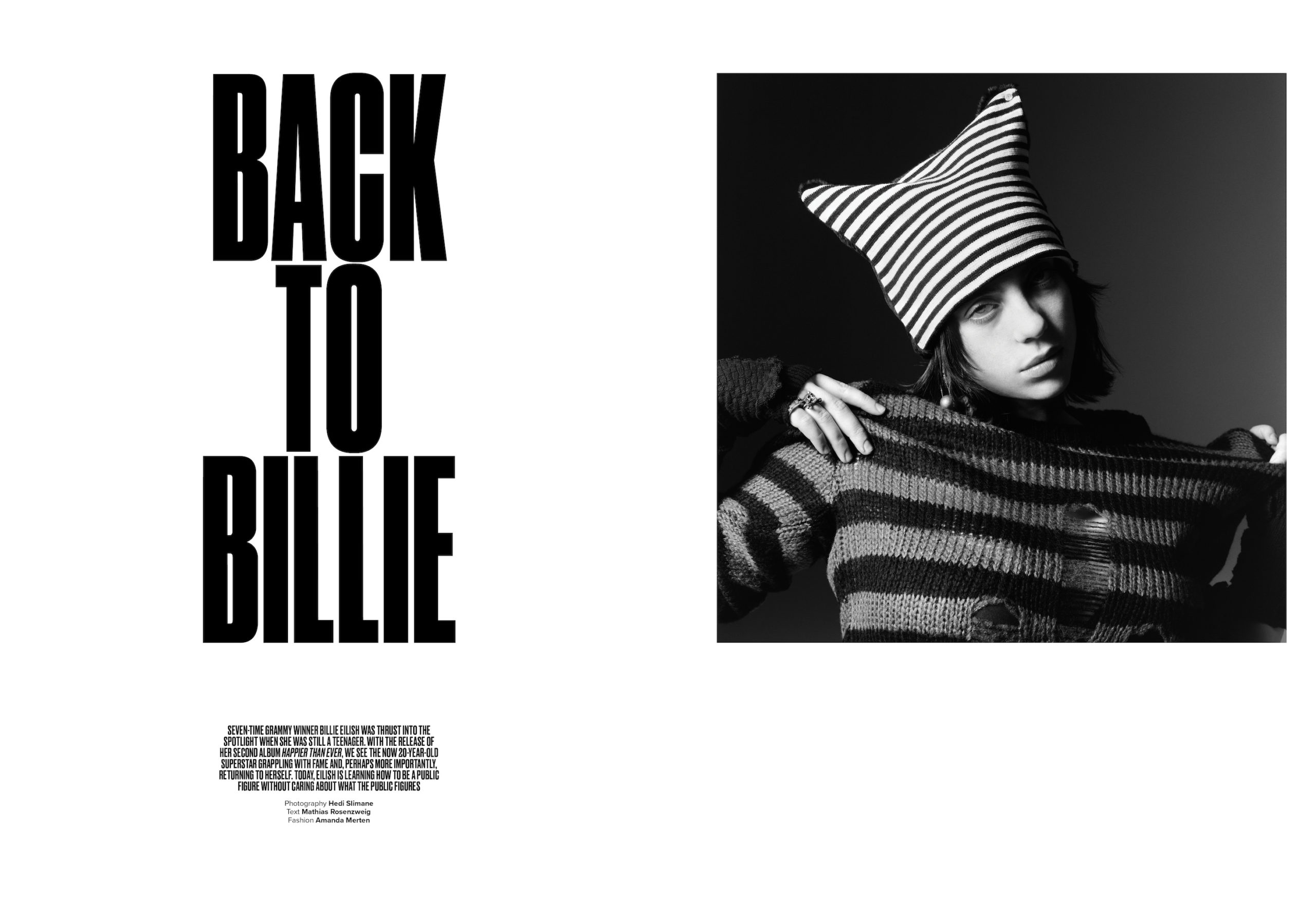
“She came with a vision of what she wanted,” Slimane said at lunch, after the shoot. “I liked that.”
Eilish had that vision and those dreams even while growing up just a few miles from the studio. Even so, she probably never believed she’d actually be gracing the cover of magazines. Then there are real-life nightmares that a child could never even conceive of, such as thousands of insurgents storming the Capitol Building in Washington D.C., an event that took place on the same exact day as the shoot one year prior. Perhaps it’s the fact that so many of her dreams have come true that makes Eilish’s nightmares, and the possibility of their actualization, all the scarier. Anything, history shows, can happen.
“I was having a lot of really, really unbelievably terrible nightmares,” she says, reflecting on a few years back when she began using a meditation app for sleep. “I was having weird sleep paralysis. It was just not a good period for my brain. I couldn’t sleep. I would go to bed at like four in the morning and wake up at one in the afternoon. And I would listen to that meditation app every single time I needed to take a breath and not think about the horrors that were going on in my mind.” She’s spoken before about turning these nightmares into her music videos, effectively harnessing her demons into art that has resonated with millions and millions of fans. But it’s the “real-life” dreams and nightmares that will remain a lifelong balancing act. “I did so much self-reflection and thinking about my life, and remembering my life, and going back to therapy and talking through my life,” she says of the 2020 lockdowns. “A lot was realized.”
One thing Eilish realized? The moment she stopped feeling comfortable going out in public. After three months of touring, at the age of 16, she returned to Los Angeles to go ice skating with a friend. “It was a nightmare and it scared the living hell out of me, because I was just turned into this prop,” she recalls. “I’ve never been so scared. It was like, a huge stampede…in those three months, I’d gotten bigger, but I didn’t know it until I was in that situation. From that day on, I didn’t go anywhere. I didn’t do anything. I was so flipped out by what had happened and how powerless I felt. And I didn’t have security because I didn’t have the money for it. I was the level of fame that needs security, but also the level of fame where you don’t really have the resources.”
This, paired with other experiences that accompany a burgeoning career, effectively catapulted Eilish out of teenagehood prematurely. “I haven’t thought like, What am I gonna do when I grow up? since I was, I think, 15. Because I was doing the thing that I’m gonna be doing forever.”
“By the time I’d grown up, I naturally supposed that I’d grown up,” Babitz once said. While Eilish’s debut album served as an elevated yet undeniably “normal” embodiment of teenage angst, ambition, and heartbreak, Happier Than Ever sees the bonafide star grappling with a near god-like level of attention, now tenfold what it was back at the skating rink. “I can barely go outside, I think I hate it here,” she sings in “NDA.” “Maybe I should think about a new career / Somewhere in Kauai where I can disappear.”
I ask her if being a celebrity has been as restricting as it has been freeing. “It’s an unbelievable 50/50,” she answers. “There are so many things that I would never ever be able to do if I didn’t have what I have, and so many things that I can never do again,” she says. “And that, that’s the thing that is freaky—never—you know? Just hearing that word come out of my mouth freaks me out.”
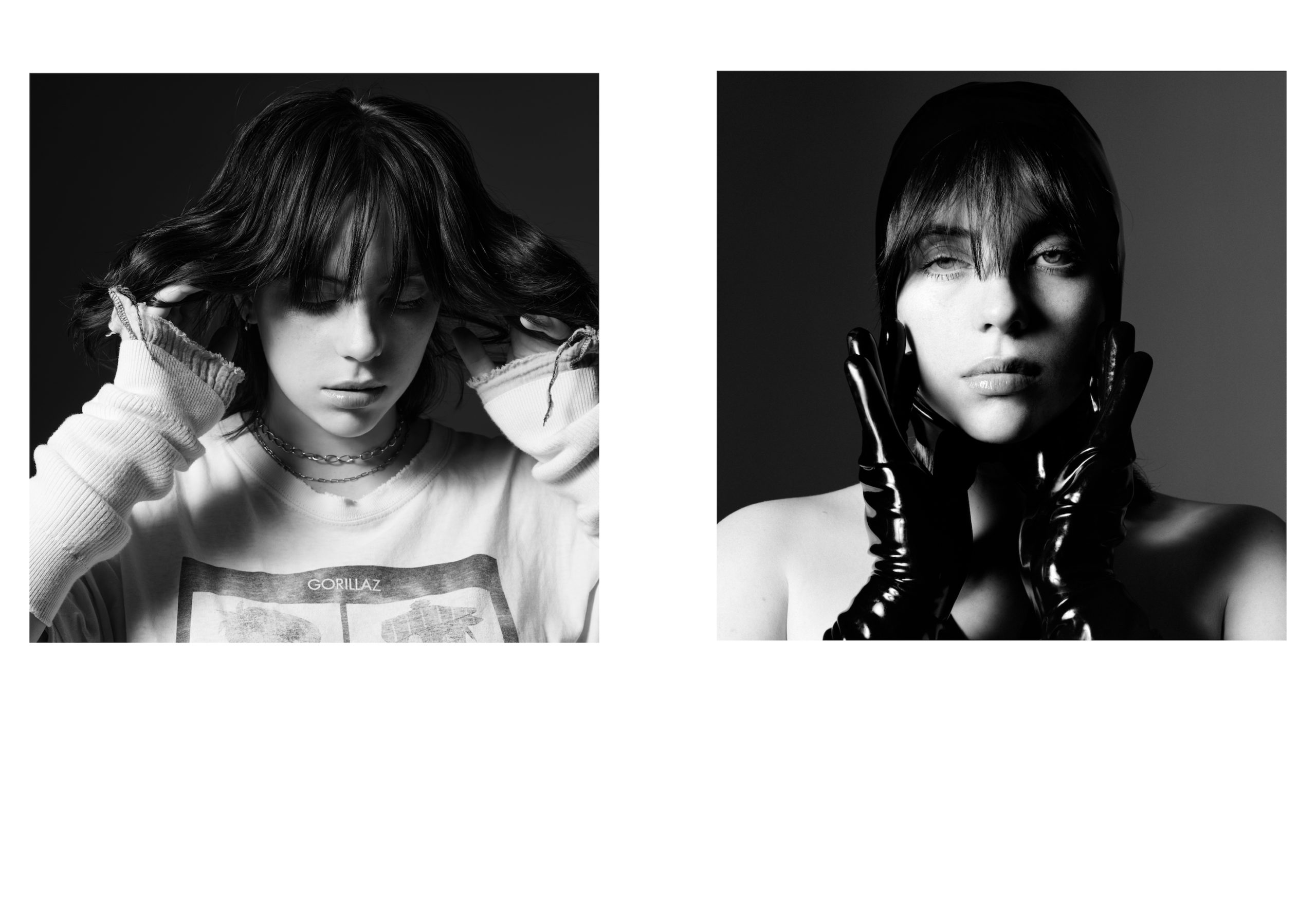
That said, Eilish is clearly careful not to complain too much about fame. Talking about her meditation again—more on my insistence than hers—Eilish says, “It actually helped me through a very, very dark situation that I was in. I would lie in bed miserable in the middle of the night, on a tour bus, back when I didn’t want to be doing what I was doing. It was just a dark period of, unfortunately, resenting life, which I feel badly about, because I shouldn’t have been resenting anything. I was doing things that were fun. I just wasn’t having fun doing them.”
Despite the physical and metaphorical miles Eilish has traveled, her childhood home in Highland Park remains largely untouched.
“My relationship with my home has not changed, just like with my parents and my brother,” she says. The thought of Eilish, whose life is so big, still in her childhood home adds a cartoonish element, even if she says on the album that she bought a “secret house” at 17. “I think it’s a bit jarring for some people who grew up with me or haven’t seen me in a long time…[they] come over to see us and see that it’s exactly the same. It’s as if you walked in here and it’s 2003.”
There’s a slight rustling over the phone for a moment. “Sorry,” Eilish says, “my dog is being such a moron. Anyway, it feels the same as it always did. There’s no sign that a famous person exists within 200 feet of this area. I mean, it’s really funny. I have to remind myself what my life actually is to the outside world, because I just forget sometimes. My life really, honestly feels the same as it did when I was a child…except that I don’t have any friends.” She lets out a contagious laugh. “I mean, besides the people that I work with, who are absolutely my friends—they’re actually my best friends.”
A few days after Eilish’s cover shoot, her team confirmed rumors that she would be headlining Coachella. Hinting that she was less than pleased with her past performance in 2019—”I really resent the things that were surrounding me during that period of time…I had that ruined for me by a person, but that’s okay,”—she is nevertheless excited for round two. “I’m headlining Coachella. I mean, that’s a crazy thing to say.”
This particular billing not only validates the tremendous success of her second album, which is hardly an easy feat, but the fact that Eilish’s career prognosis is about as good as it gets. She’s so young and yet clearly gets even better with age. Perhaps, some of this has to do with evolving away from the Billie Eilish figure that burst onto the music scene and going back to the basics, or back to just “Billie.”
Back at Milk, Eilish and Slimane wrap their shoot around 3:00 pm. Maggie Baird checks with everyone on set that the vegan catering from Kitchen Mouse will not be thrown out. She tells me that during the pandemic she and Billie started a program called Support + Feed, whose mission is to provide nutritious, planet-friendly, plantbased food for those in need. In the same spirit, Eilish only agreed to wear her head-turning, old Hollywood glamour-esque Oscar de la Renta dress to the Met gala if the fashion house promised to go fur-free in the future. As Baird explains that the whole point of fame is to change the world for the better, Eilish is back in her dressing area throwing on the sweats and a Gucci backpack before heading off. Everyone began to make their way back to their cars, back to the streets of L.A. that had been so famously captured in the late Joan Didion’s writing.
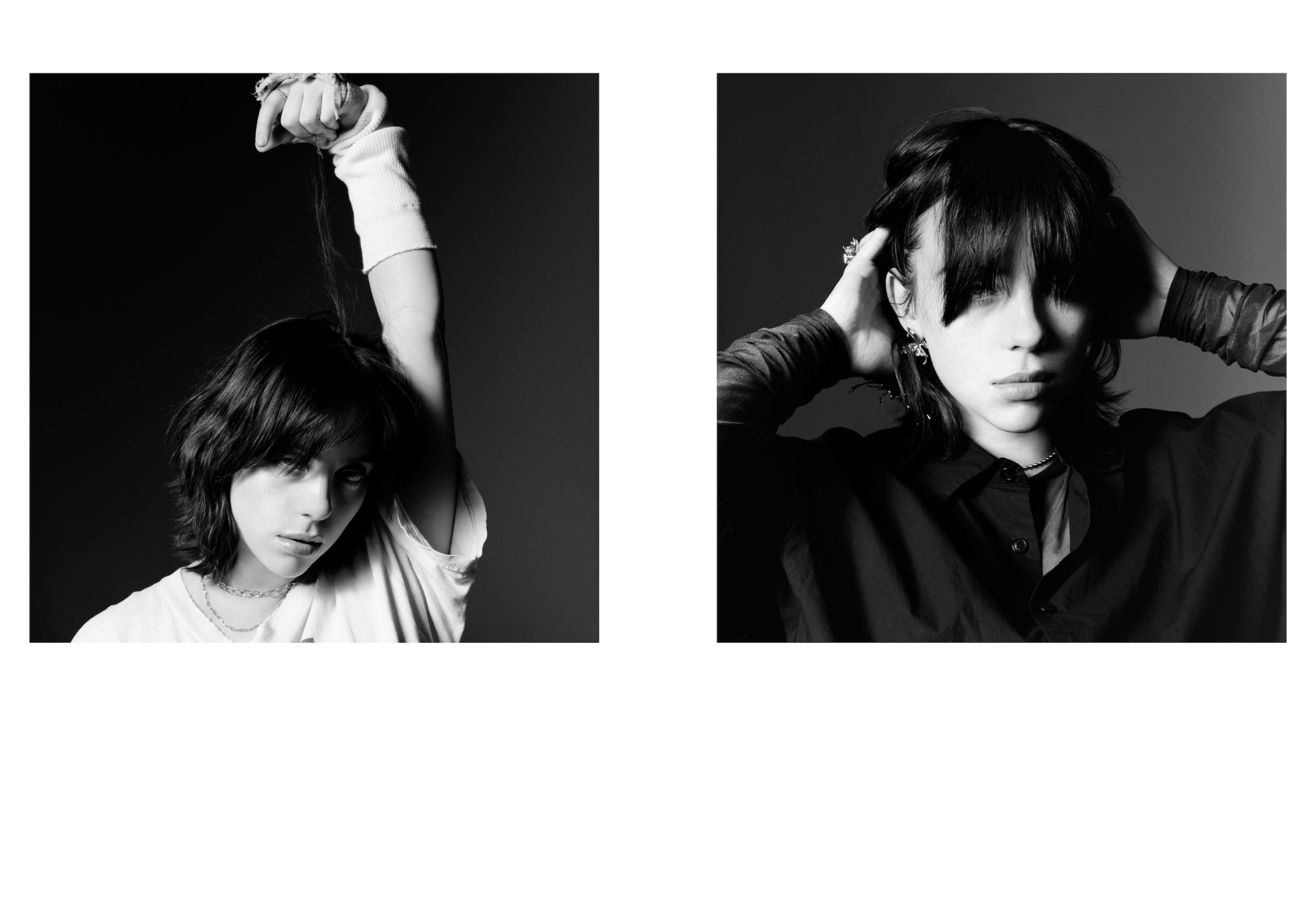
“Anyone can ‘drive’ on the freeway, and many people with no vocation for it do, hesitating here and resisting there, losing the rhythm of the lane change, thinking about where they came from and where they are going,” she wrote in her essay “On the Road.” Similarly, in Eilish’s music video for “NDA,” the singer walks down a deserted street under the cloak of night, somewhere between careless and carefree, her blonde hair whipping around in the wind—perhaps the Santa Ana winds that Didion helped immortalize in her work. A spotlight begins to grow, illuminating Eilish, until we realize that it’s the headlights of cars beginning to race chaotically toward her. “Actual participation requires a total surrender, a concentration so intense as to seem a kind of narcosis, a rapture-of-the-freeway,” Didion finished.
While driving back to Marina del Rey, the aforementioned blue sky is blocked by a thick fog. Again, perhaps the Santa Ana winds were at play. A voice on the radio says visibility is less than a quarter-mile. Along the beach, volleyball players dissolve into mere silhouettes in front of the ocean, which itself is completely invisible. The city doesn’t seem to be tipping into the water so much as the water invades the land in the form of an overpowering cloud. The scene is beautiful and apocalyptic. It’s somehow reminiscent of Eilish’s first single, “Ocean Eyes,” in which she describes burning cities and napalm skies along with the deep blues of a lover.
Despite the fog, it’s clear how a tempestuous city like Los Angeles could shape an artist like Eilish—her car sinking underwater, her head dreaming in the clouds.
This cover story appears in V135: now available for purchase!
Discover More
